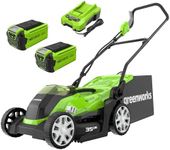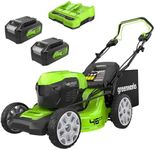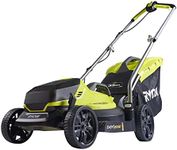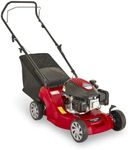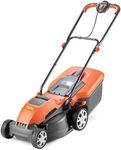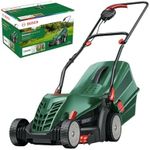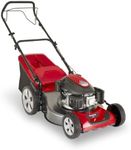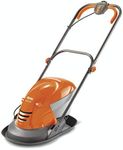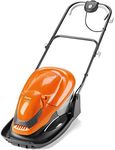Buying Guide for the Best Cheap Lawn Mowers
Choosing the right lawn mower can make maintaining your yard much easier and more efficient. When selecting a lawn mower, it's important to consider the size of your lawn, the type of grass you have, and your own physical capabilities. By understanding the key specifications and features, you can find a lawn mower that best fits your needs and ensures a well-kept lawn with minimal effort.Type of Lawn MowerLawn mowers come in various types, including push mowers, self-propelled mowers, and riding mowers. Push mowers require manual effort to move, making them suitable for small, flat lawns. Self-propelled mowers have a motor that drives the wheels, reducing the effort needed to mow larger or uneven lawns. Riding mowers are ideal for very large lawns, as they allow you to sit and drive the mower. Choose a type based on the size and terrain of your lawn and your physical ability to push or drive the mower.
Cutting WidthThe cutting width of a lawn mower refers to the width of the strip of grass it can cut in a single pass. This is important because a wider cutting width can reduce the number of passes needed to mow your lawn, saving you time and effort. Cutting widths typically range from 14 inches to 30 inches or more. For small lawns, a cutting width of 14-18 inches is usually sufficient. Medium-sized lawns may benefit from a width of 19-22 inches, while large lawns may require 23 inches or more.
Power SourceLawn mowers can be powered by gas, electricity, or batteries. Gas-powered mowers are typically more powerful and can handle larger lawns and tougher grass but require more maintenance and produce emissions. Electric mowers are quieter and more environmentally friendly but may be limited by the length of the power cord. Battery-powered mowers offer the convenience of cordless operation but may have limited run time before needing a recharge. Choose a power source based on the size of your lawn, your environmental concerns, and your preference for maintenance and convenience.
Height AdjustmentHeight adjustment allows you to change the cutting height of the mower blades, which is important for maintaining the health of your grass. Different types of grass and seasonal conditions may require different cutting heights. Most mowers offer multiple height settings, typically ranging from 1 to 4 inches. Look for a mower with easy-to-use height adjustment mechanisms, such as a single lever or multiple levers, to ensure you can quickly and accurately set the desired cutting height for your lawn.
Grass Clipping ManagementLawn mowers can handle grass clippings in different ways: bagging, mulching, or side discharge. Bagging collects the clippings in a bag, which you can then dispose of or use as compost. Mulching finely chops the clippings and returns them to the lawn, providing nutrients. Side discharge ejects the clippings out the side of the mower, which can be useful for quickly clearing large areas. Consider how you want to manage your grass clippings and choose a mower that offers the appropriate option or multiple options for flexibility.
Ease of UseEase of use encompasses several factors, including the weight of the mower, handle comfort, and maneuverability. A lighter mower is easier to push and maneuver, especially in tight spaces or on uneven terrain. Comfortable, ergonomic handles reduce strain on your hands and arms during extended use. Look for features like adjustable handles, easy-start mechanisms, and simple controls to ensure the mower is user-friendly and comfortable to operate.
